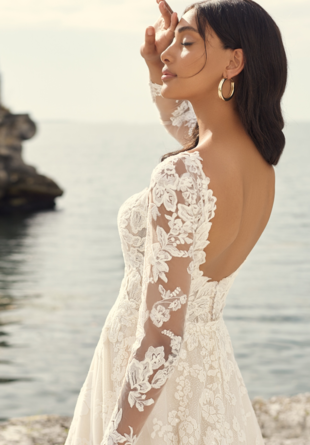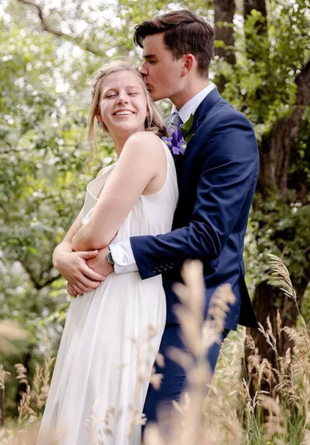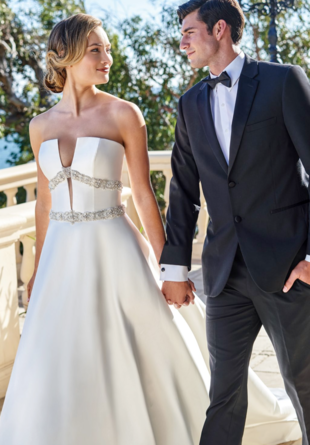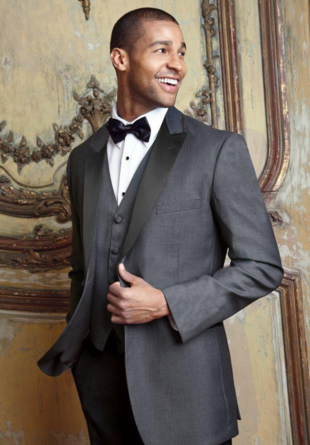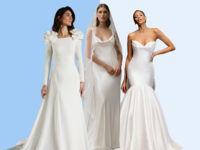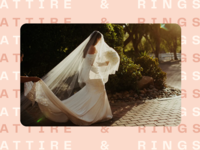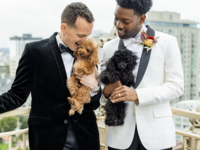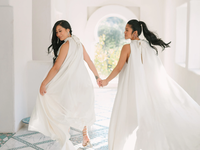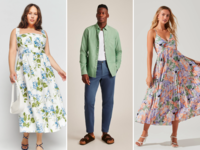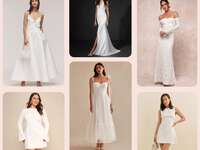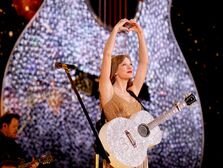11 Types of Wedding Dress Sleeves

Different types of wedding dress sleeves aren't so much on trend as they are an inherent part of bridal fashion. "One thing to remember about fashion in general is that it is evolutionary, not revolutionary," says Lourdes Castañeda, the Charleston-based bridal designer behind Edith Élan. "In other words, style details, silhouettes, fabrics and sleeves will come and go over the years." That said, sleeves—and in particular, detachable ones—are having a moment as brides look to switch up their look throughout the day. And there's a major bonus to donning the look on your wedding day of all days: "Sleeves convey a level of romanticism," Castañeda says.
And let's be clear: We're not just talking about short or long sleeves. There are countless styles and ways to cover your arms, from romantic off-the-shoulder wedding dress sleeves to whimsical bishop sleeves to lace illusion ones. With Castañeda's help, we break down nearly a dozen different wedding dress sleeve styles below.
In this article:
Types of Wedding Dress Sleeves
There are infinite types of wedding dresses, thanks to the endless combinations that can be created by their various parts and pieces, each element with its own set of variations. Sleeve styles for wedding dresses, for example, are no longer limited to just long or short—there are bishop, balloon, flutter, puff and more. (In fact, the trendiest wedding dress sleeves offer more than one look in one.) Here, we break down 11 common sleeve types you might encounter while trying on wedding dresses.
Wedding dress sleeve styles: Balloon | Bardot | Bell | Bishop | Cap | Convertible | Flutter | Illusion | Long | Puff | Short
1. Balloon Sleeves
"Balloon sleeves look very similar to puff sleeves; however, the difference is that most of the volume is in the middle of the balloon sleeves, with it significantly tapering toward the shoulder and cuff," Castañeda explains. "Also, balloon sleeves are longer and therefore more elongated in shape than puff sleeves." Balloon-sleeve wedding dresses can have a variety of dress necklines—think off-the-shoulder, V or square—and the sleeves are often convertible, able to be worn on the shoulder for an added puff or off for a draped look. "Tulle, net and lightweight woven fabrics are best [for this style]; they will help hold the sleeve shape without collapsing on itself."
2. Bardot Sleeves
"A Bardot sleeve is an off-the-shoulder sleeve that creates a sleek, straight line from one arm across the neckline to the other arm," Castañeda says. "They're called Bardot sleeves because Brigitte Bardot was known for wearing this neckline-sleeve combination." Within these parameters, Bardot-sleeve wedding dresses can have a lot of variety. "The length of the actual sleeve can vary from long to short, and can be fitted or ruched," Castañeda says. The sleeves can be draped or more secure, and might even be convertible.
3. Bell Sleeves

First made popular in the 1970s, bell sleeves and, in particular, bell-sleeve wedding dresses, veer toward the bohemian, often rendered in unique laces or other lightweight wedding dress fabrics. The silhouette is defined by a sleeve that gets wider as it goes down, but there are a few variations: Bell sleeves can start getting wider from the shoulder down (this creates the most voluminous, drapiest bell) or can be fitted from shoulder to elbow and then bell outward from elbow to wrist. (The most demure bell sleeve dresses could technically also bell out from the wrist.) Often, the bell sleeve extends past the hand for dramatic effect. We love this shape for Western mountain weddings.
4. Bishop Sleeves

"Bishop sleeves are fitted at the shoulder, then get more voluminous as they go down your arm, and finally gather at your wrist with a cuff," Castañeda describes. "They get their name from the fact that throughout history, they've often been associated with religious garments." She notes that bishop-sleeve wedding dresses can technically be made in any fabric, but that the weight of the fabric will determine if the sleeve is poofier or drapier—either version is still considered "bishop." Edith Élan's Milly dress features voluminous sleeves in drapey crepe, while the label's Gene dress showcases a lighter, lacier take on the sleeve.
5. Cap Sleeves

Cap sleeves are fitted sleeves that cover just the shoulder. They're different from short sleeves: "They aren't much longer than a few inches, and they don't extend into your underarm," Castañeda says. "Cap sleeves can be made of the same fabric as the rest of the garment, or they can be an embroidered tulle that adds a sheer element to the look." In addition to style, cap sleeves can help fulfill modesty requirements for church ceremonies or in other sacred spaces. "Adding detachable cap sleeves to a strapless dress is often how nearlyweds meet religious requirements for the wedding ceremony, wherein they must have their shoulders covered, but they don't want or need a full-length sleeve to cover their arms."
6. Convertible Sleeves

Convertible wedding dresses are all the rage as brides look for ways to change up their look on the wedding day. There are removable overskirts, long-sleeve lace toppers and more. Another way to convert your dress's look is with sleeves, which can be completely detachable or convertible in and of themselves. "Convertible sleeves [offer] built-in outfit versatility," Castañeda says. "These allow for repositioning on the arm without taking them off; for example, sliding them from a cap sleeve to an off-the-shoulder look." Detachable styles run the gamut as well: Think long lace sleeves that leave the shoulder exposed or pretty puffs that rest on the middle of your upper arm.
7. Flutter Sleeves

Flutter sleeves are a style of short sleeve in which the sleeve itself is loose-fitting and typically flares out from the shoulder. The more lightweight the sleeve, the more able it is to actually "flutter," so you'll often find these rendered in airy chiffon or unique tulles (like the Swiss-dotted net used in Edith Élan's Mai dress). Flutter-sleeve wedding dresses had their big moment as a wedding dress trend about a decade ago, though the style can still be found; the sleeve shape is also incredibly popular for bridesmaids' dresses.

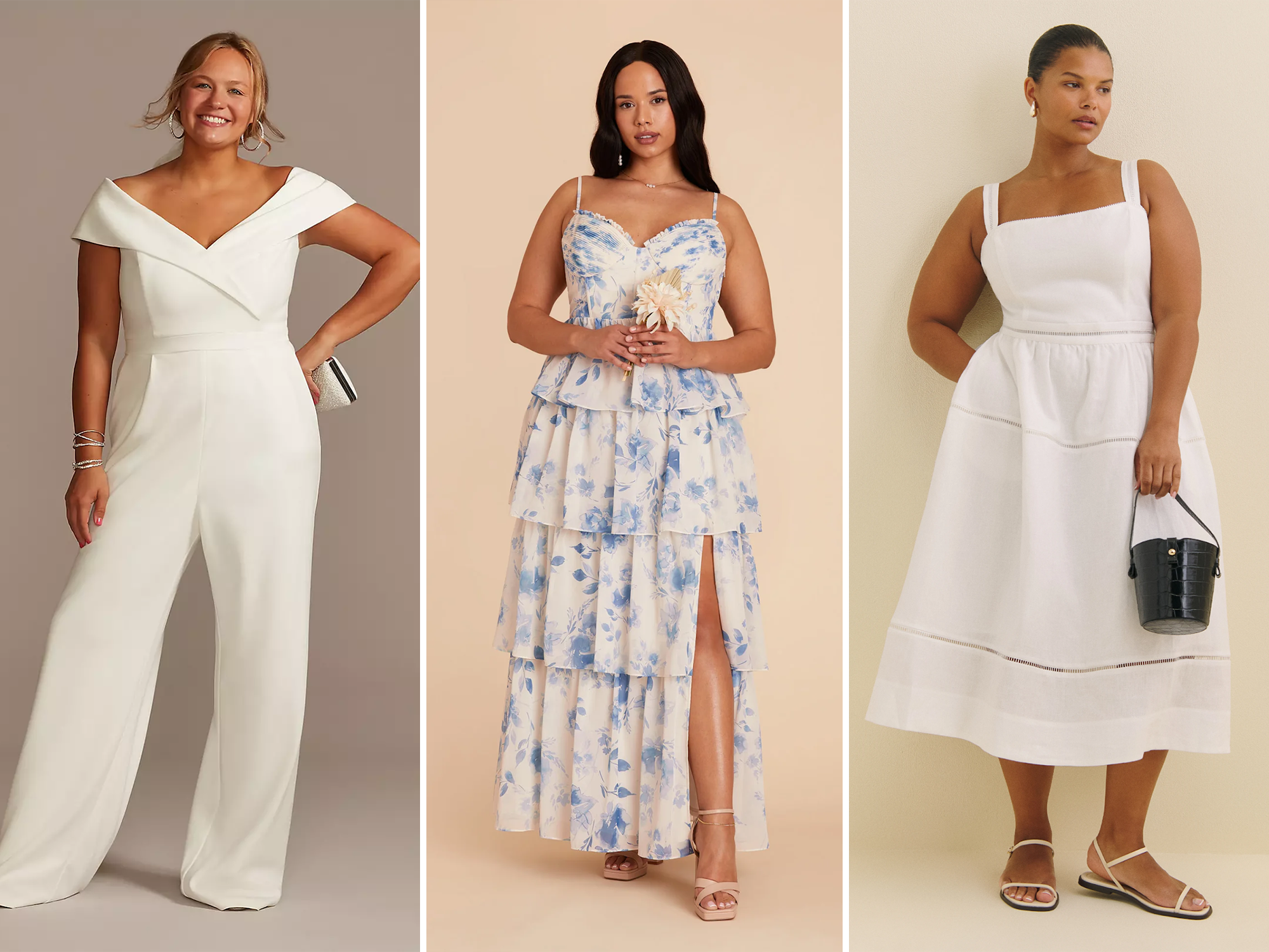

8. Illusion Sleeves
"Illusion sleeves are fitted and made from a sheer, illusion tulle," Castañeda says. "They often have some lace or embroidered embellishment. When the tulle matches the skin tone, it creates the illusion that the embellishment is floating on the skin." Sleeves can be long or short—the illusion being more dramatic, of course, the longer the sleeve—and are often paired with illusion neck or backlines as well. The aesthetic is magical and can even be sexy and sultry, depending on the placement of the embellishments. Also note that the dresses are extremely delicate, as illusion tulle is ultra-thin and lightweight so as to almost disappear.
9. Long Sleeves
The most self-explanatory type of sleeves on wedding dresses, long sleeves cover the whole arm from shoulder to wrist. But that's where the commonality ends, because long-sleeve wedding dresses can be any silhouette, any fabric, any neck and back line. There are lace long-sleeves, solid, illusion, tapered—even some of our other sleeve types like balloon and bishop can fall into this category. Alternate variations on long sleeves include three-quarter length or off-the-shoulder styles, both of which expose some part of the arm while still offering a covered look. Brides might opt for long sleeves to fulfill modesty requirements or their own desire for modesty, but the look is also fashionable: It's an utterly sophisticated style that gives princess vibes. Plus, many long-sleeve wedding dresses or toppers are convertible, allowing the bride to wear sleeves for the ceremony but remove them for the reception.
10. Puff Sleeves
"Puff sleeves are short, poofy sleeves that sit on your shoulders—like a puff ball!" Castañeda says. "Tulles, nets and lightweight wovens like taffeta or mikado are great fabric options for puff sleeves since they give the sleeves the volume without worry of collapsing under the weight of the fabric." As with many of the styles on our list, there are variations within the puff sleeve category. "While they are most commonly gathered at the shoulder and at the hem, they can also just have fullness only at one end or the other," Castañeda adds. "Puff sleeves can also have elastic on the shoulder that allows them to be pushed down into an off-the-shoulder look and stay snug to the arm." Puff-sleeve wedding dresses are typically short-sleeve (long-sleeve puffs would be considered balloon sleeves), but even that rule has exceptions. Edith Élan's Harlow, for instance, has two puffs on each sleeve, gathered in the middle at the elbow.
11. Short Sleeves
Short-sleeve wedding dresses feature a swath of fabric covering the shoulder and extending to the mid-upper arm, just like a T-shirt would; the sleeve is longer than a cap sleeve but shorter than three-quarter length or long sleeves. The category does encompass styles like puff sleeves, but is most often associated with fitted short sleeves. Of all the different types of sleeves on wedding dresses, short sleeves are, somewhat surprisingly, one of the rarest, possibly because the look has a more casual feel. For that reason, short sleeves work particularly well in relaxed settings—think backyard weddings or intimate outdoor affairs.
Bridal Sleeves FAQ
Now that you're familiar with the most common wedding dress types of sleeves, let's answer a few need-to-knows.
How do I know what type of wedding dress sleeves are right for me?
The short answer: You know what type of sleeve is best for you by trying them on and gauging what you feel your absolute best in. There's no right or wrong answer, no body-type musts to keep in mind. A starting point might be what you wear in your everyday life—do you prefer long, short or sleeveless day to day? "The best type of sleeve for a bride or nearlywed is whatever they feel most comfortable in," Castañeda says. "There is also no rule that dictates if you have a certain body type, you need to wear a specific type of sleeve (or a sleeve at all). One of the biggest myths I've encountered in all my years in bridal is that if you have a curvier or plus-size figure, you need to cover your arms. No. Full stop. I've had clients wear sleeves that span the range of sleeve styles—long and voluminous, tight and lacey, short and fluttery—but in the end, what mattered is that they were comfortable and they felt like themselves." Our advice: Try on everything! You can find local bridal salons and bridal stylists near you on The Knot Vendor Marketplace.
Can I change the sleeve style of my wedding dress?
Luckily, bridal sleeves are one part of a wedding dress that is fairly easy to customize. At her atelier, Castañeda says the process of adding sleeves to a wedding dress is seamless—pun intended. "While I can only speak for myself, it is easy to add a sleeve to a dress, especially when there is already a strap or an armhole to start from. It's also easy to make an attached sleeve detachable during the dress's production: Snaps are added on the sleeve and the inside of the dress." If you purchased a dress at a bridal salon, you can take it to a seamstress, alterations specialist or custom designer to change the sleeve style, just be sure to come prepared with information. "To change the design of the sleeves, I use reference and inspiration photos for what the nearlywed wants in combination with the measurements taken by the boutique," Castañeda adds. (In The Knot Vendor Marketplace, filter by Bridal Salons > More Filters > Fashion Services for Alterations and Custom Designs to find an expert alterationist.)
If sleeves are detachable, when should they be worn?
Many ready-to-wear and custom wedding dresses have sleeves that are detachable, so the bride can change up her look throughout the day. Typically, brides will wear their sleeves for the first half of the day, including first look, photos and ceremony. "When there is a planned outfit change that involves detachable sleeves, the sleeves that were worn for the ceremony are taken off for the reception," Castañeda says. Just make sure your photographer gets portraits in both styles!







